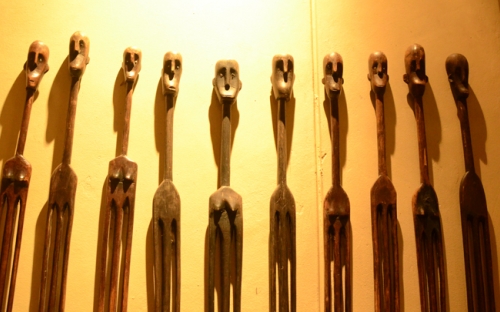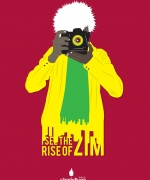Transforming The Colonial Legacy Through Art
The following article is intended to raise awareness of the socio-cultural dynamics of african art on the international art circuits, in order for zimbabwean visual art practitioners to understand and define their own space as arts writers, scholars, visual artists, curators and art critics, in relation to world art practice, discourse and world art biennales.
Globalisation
Globalisation has had a profound effect on various aspects of the world in the last 40 years, and the art world and indigenous cultural materials are not excluded from this process. The interest in diversity and multi-culturalism that initially sprang from socio-political disciplines has made forays into the art world. As a result, art is losing its cultural indigenous dialects, identities and accents, and is instead becoming a western flavoured visual “esperanza”. For many indigenous peoples, the western art world remains professionally divorced from the social and culturally specific milieu it should address.
Where is world art today?
The global dynamics of today’s art world have transformed art practice into a bourgeois, academic and exclusive language for the so-called “informed and enlightened” clique of “socially connected” curators, scholars, artists, architects, dealers, cultural agents, collectors and corporate buyers; much to the exclusion of authentic african expression from the motherland.
The rise and proliferation in europe and america of curators, collectors and architects who specialize in transforming galleries and art museums into powerful corporate brands which are intended to provide mass-entertainment, generate art and cultural tourism or solve socio-cultural problems are in the same process de-individualising the concept of art as a product of individual genius and master craftsmanship – in shona “hu mhizha”.
Dematerialisation of art
Today, there are more people, more venues, more exhibitions, more publications, more artists, more words and less time. The creation, marketing and distribution of visual art have become huge corporate machineries that destroy “individuality” and cultural identity in the process of so-called “cultural advancement”. The artist as “genius” model has expired. The use of “traditional” art genres and materials are slowly becoming obsolete, in favour of artificial gimmicks, dvd installations and temporary spectacle.
The de-materialisation of the object of art and its expansion into idea, phenomenon and transience have made it possible for a text, performance, audio-visual projection of artificially made environment to be defined as “visual art”. Additionally, photography has attained equal status, as paint brush, hammer and chisel or metal forge, has been re-defined as “art photography”.
Today’s art expression is all about context, social praxis and the right scheme or strategy within the operating system of art! Western visual artists in their “new roles” as cultural analysis and “service providers” have adapted to this “new world development” ahead of african artists. Consequently, the industrialisation of the art world is thus purely a social and financial phenomenon of which we, as africans should be wary of – before our participation in “their” representation or exhibitions of us. In short, it would be more meaningful for african countries to host world biennales on the continent, and zimbabwe, due to its infrastructure, would be an appropriate venue for such an event.
Loss of identity – the dangers of “labels”
Given that art is expanding in an ever international direction, productively co-opting peripheral territories into the centre, the persuasive, multifarious strategies of western capital and commerce, and the spectacle of art fairs and biennales are over-shadowing african identities and ideas, under the guise of being “contemporary”, “post-colonial”, “post-post-modern”, or “post-post-african”
The question here is; what do you become when you are post-post-african”? A non-entity? A description? A definition? Perhaps! But not a tangible, living, indigenous african artist responding to your own milieu, but rather one at the service of western superiority, neo-colonialist and neo-imperialist scholarship.
It is important for africa to realise that art historical scholarship is centred entirely on europe and america’s misconception of africa. Art history by virtue of its euro-centric exclusionist nature, has omitted much of africa’s contribution to global visual art discourse.
Cononial history and the scrable for African art
Pre and post-colonial western perceptions of african art and culture were and still are, predominantly subject to the sovereignty of euro-american of euro-american interpretation. We know that the entire size and multiple cultural facets of the african continent cannot be defined or categorised as one art form. Artists from africa are as diverse as their indigenous language, creeds and cultures. They gather their inspiration from local sources, from ideas, experiences and materials, stemming from their socio-cultural milieu as well as from their international experiences and contacts. They ultimately straddle two worlds. As a result “they show us the creative tension between local and global aspects of life”. Cultural globalisation does not, inevitably, lead to the loss of local cultural idiosyncrasies if we do not allow the west to subsume our culture – yet again!
An explosive topic in today’s art world is the “definition of the different strands of african identities vis-a-vis globalisation. The art‘s contribution to the latter debate, allows us to overcome art’s historic clichés, constructs and colonial prejudice.
Defining ourselves
Art raises the perception of the reality of our cultural and economic networks and focuses on the African memory. It informs the political, cultural and economic tensions that structure europe’s relationships with their former colonies. One must know that the basis of colonial and imperial social-political order of the 19th century was one of “rampant” immorality and violent plundering and looting of africa-s resources. “The scramble for Africa” can be re-defined as “the rape of africa and destruction of african-ness”.
In order for us to liberate ourselves from western programmatic lables of authenticity and originality, we, as africans, particularly zimbabwean artists, need to re-define ourselves and update our professional, cultural contribution to world art discourse.
A look at world art biennales – “the scramble for africa and visual culture”
“The violent expropriation of the african continent’s resources and culture in the 19th century during the berlin-congo conference of 1884-1885, organised by the then german chancellor, otto von bismarck, to formalise and encourage european colonial claims on african territories, tore the umbilical thread of authentic african indigenous cultural expression.
Today’ contemporary art from africa is largely a product of this decadent and violent appropriation of african land, hearts and minds. So-called “post-colonial art” which is a growing trend in our west african neighbours, is a visual expression that informs the political, cultural and economic tensions that structure europe’s relationships with its former colonies.
As we approach the next 54th venice biennale in the summer of 2011, let us proceed cautiously and not be swallowed by western politics of power and cultural hegemony and prejudice.
Zimbabwe as a nation requires its own pavilion, defined and determined by professional art advocates, who though few in zimbabwe, do exist and can made a difference to the course of art history.
It is time for us, as africans, to reclaim our own memory and vision, by defining our own space in the world visual arts discourse. If the next major art biennales are to include zimbabwe, or other african countries, they must be held on african soil, only the, can we call our art our own.




